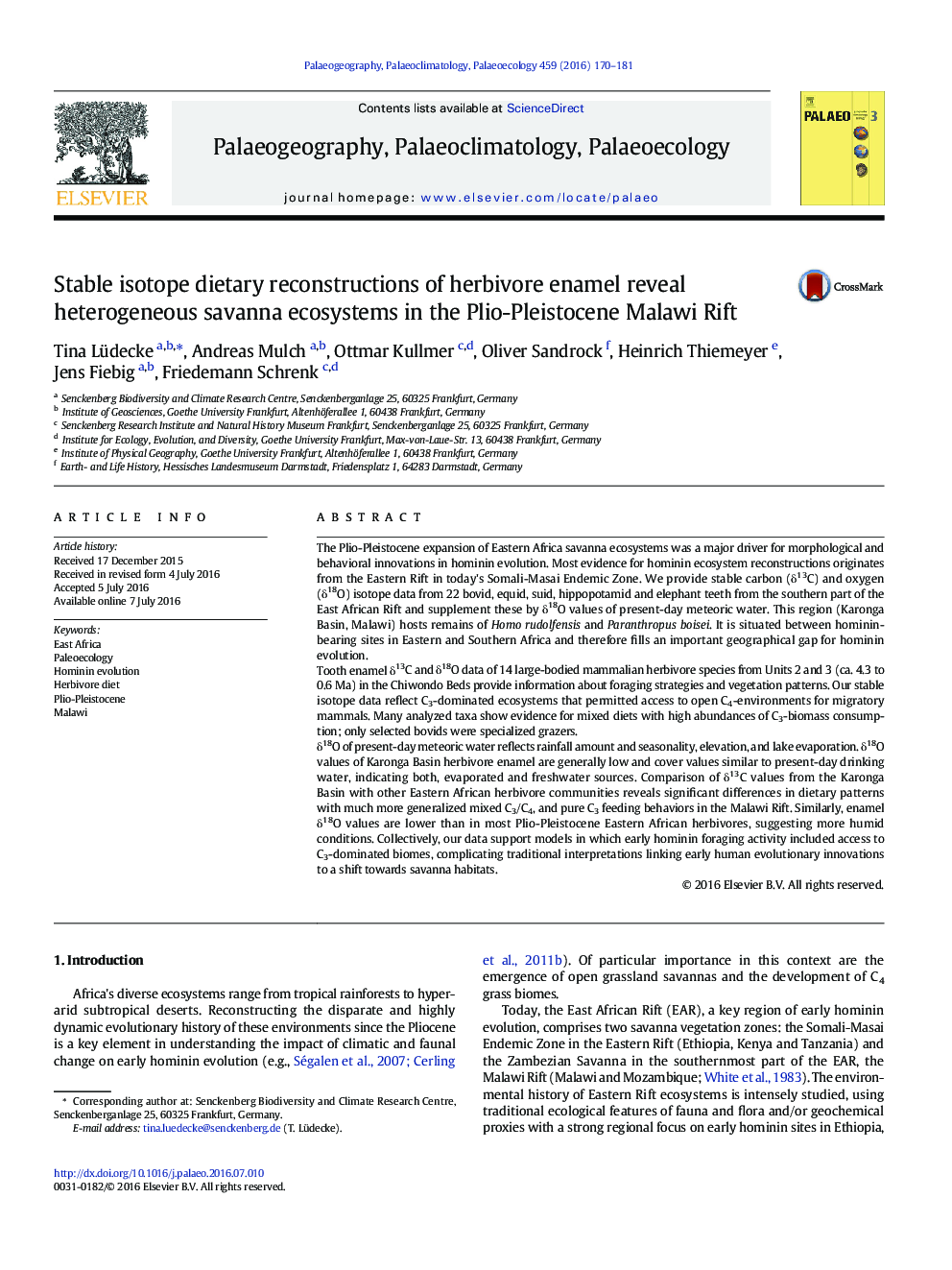| Article ID | Journal | Published Year | Pages | File Type |
|---|---|---|---|---|
| 4465630 | Palaeogeography, Palaeoclimatology, Palaeoecology | 2016 | 12 Pages |
•The Plio-Pleistocene Karonga Basin ecosystem was dominated by C3-vegetation.•Access to open C4-environments existed for large-bodied migratory mammals.•Karonga Basin herbivores consumed more C3 biomass than East African Rift counterparts.•Malawi Rift habitats were more mesic than the Eastern Rift during the last 4.3 Ma.
The Plio-Pleistocene expansion of Eastern Africa savanna ecosystems was a major driver for morphological and behavioral innovations in hominin evolution. Most evidence for hominin ecosystem reconstructions originates from the Eastern Rift in today's Somali-Masai Endemic Zone. We provide stable carbon (δ13C) and oxygen (δ18O) isotope data from 22 bovid, equid, suid, hippopotamid and elephant teeth from the southern part of the East African Rift and supplement these by δ18O values of present-day meteoric water. This region (Karonga Basin, Malawi) hosts remains of Homo rudolfensis and Paranthropus boisei. It is situated between hominin-bearing sites in Eastern and Southern Africa and therefore fills an important geographical gap for hominin evolution.Tooth enamel δ13C and δ18O data of 14 large-bodied mammalian herbivore species from Units 2 and 3 (ca. 4.3 to 0.6 Ma) in the Chiwondo Beds provide information about foraging strategies and vegetation patterns. Our stable isotope data reflect C3-dominated ecosystems that permitted access to open C4-environments for migratory mammals. Many analyzed taxa show evidence for mixed diets with high abundances of C3-biomass consumption; only selected bovids were specialized grazers.δ18O of present-day meteoric water reflects rainfall amount and seasonality, elevation, and lake evaporation. δ18O values of Karonga Basin herbivore enamel are generally low and cover values similar to present-day drinking water, indicating both, evaporated and freshwater sources. Comparison of δ13C values from the Karonga Basin with other Eastern African herbivore communities reveals significant differences in dietary patterns with much more generalized mixed C3/C4, and pure C3 feeding behaviors in the Malawi Rift. Similarly, enamel δ18O values are lower than in most Plio-Pleistocene Eastern African herbivores, suggesting more humid conditions. Collectively, our data support models in which early hominin foraging activity included access to C3-dominated biomes, complicating traditional interpretations linking early human evolutionary innovations to a shift towards savanna habitats.
